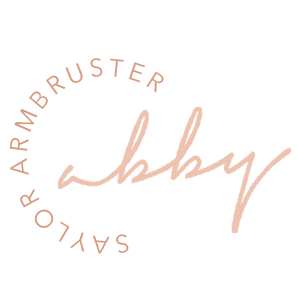Guidelines and Expectations to Follow When Working With Brands
A lot of the blogging questions I frequently get from readers and other people that are looking to start a blog revolve around working with brands. If you haven’t experienced it yet, it’s often seen as a big, mysterious, intimidating aspect of the industry. For those of you feeling that way, I’m here to help! Today’s post breaks down the guidelines and expectations to follow when working with brands to ensure that your collaborations are not only fun and successful for both parties, but will also help generate more work for you in the future.
To give you some background on me if you’re new here, I’ve been blogging for three years and doing brand work for two. A big aspect of turning your blog into a business with revenue is making a good impression on the brands that you collaborate with, in turn increasing your likelihood of securing future collaborations with them as well. If the brand wants to work with you again, you know you’ve done a great job!
I know signing on to your first brand collaboration can be a whirlwind of excitement, but don’t skip reading through your contract in full. Not all brands utilize contracts with every collab, but if they do, take some time to go through it so you know not only what’s expected of you, but also what’s required. Here are some common areas of importance to take note of.
Meeting deadlines.
The first and most important thing to review is the deadline. If you can’t meet it or are unable to negotiate a different one, you’re going to have to respectively decline. Whether this is due to having too many other commitments going on or whatever it may be, don’t sign on knowing you can’t meet their timeline — you’re better of declining!
Submitting W9s.
A W9 (W-9) is an Internal Revenue Service (IRS) form that’s used to gather information about a contractor, so that their earnings can be reported at year-end.
As a blogger, you’re an independent contractor (we won’t get into LLC and INC in this post since this is geared toward newbies). Though they can be a little annoying to fill out sometimes, they’re important. Once you’ve filled out a couple, you get use to it and can wiz right through. I always save these out with my name added to the file name to help the brand quickly differentiate mine from any other bloggers they may currently be working with, then keep a copy for myself on file. I find that it helps to make a folder on your computer dedicated to each collaboration so you can easily access everything when you need it.
Disclosing that your post(s) is sponsored.
This is a big one that everyone will want you to do. This can be done through a hashtag, something like “thank you (name) for sponsoring this post,” or a disclosure statement that’s straightforward like “this post is sponsored by (brand)” within your blog post.
Including #ad, #sponsored or other brand-specific hashtags in your collaborative content as specified.
Most brands will have a preference. This will often be stated within the contract, so when the time comes to post your content and you’re unsure, always take the time to refer back so you can meet their request accurately. As mentioned, they’ll often have a hashtag that’s unique to their brand or the particular campaign you’re participating in, so be sure to include that as well!
Proper tagging and social sharing.
Email correspondence with your brand contact will typically mention the social handles that you should be tagging across all of your predetermined platforms. These can sometimes vary and not be the exact same “@” across the board, so be aware of that and adjust accordingly.
If they request it, do not mention any other brands besides the one you’re working with within your sponsored posts.
Sometimes this will be mandatory in the contract. For instance, if you’re working with Target and are showing one of their candles, you may not be able to say “it looks just like the ones from Anthropologie!” Since they’re paying you to talk about their brand, they don’t want you promoting any others indirectly.
Supplying invoices.
This is likely the final step of your collaboration. Some brands I work with ask me to send my own invoice to them upon completion of the project. There are a few different platforms you can use for this, but the one I always use is PayPal. I find it’s easy to learn and it makes the whole process quick and painless for me personally. If you’re wanting to get into brand work or are just starting to get your feet wet with it, have a program set up and ready to roll when the time comes.
Submitting your mailing or PayPal address for payment.
Okay, now this is the last one — mailing checks or paying through PayPal are the two methods of payment that I’ve done in all of my collaborations. The brand selects how they wish to pay you and you almost never have a say in it, which is to be expected.
__________
I could go on and on because there’s so many questions people have about doing brand work, but I’ll end this post here! If you’d like to see more posts on this topic, check out my blogging series and let me know if you have any more requests. I’m happy to help you guys as much as I can! Thanks so much for reading and & have a great night!


